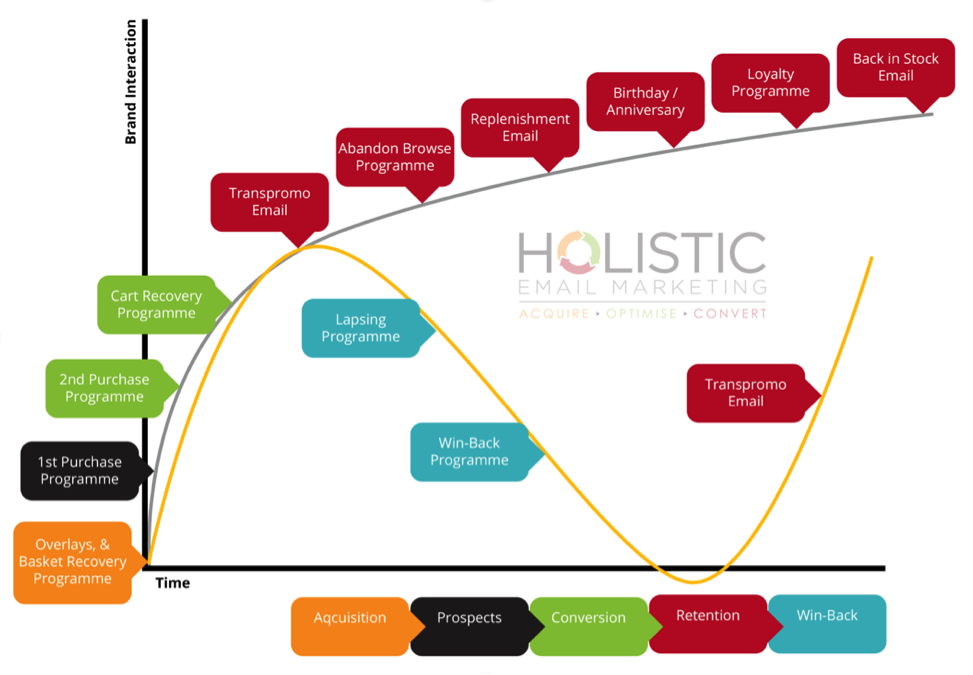Kath Pay: Transition to 'Helpful Marketing' This Holiday Season
Everybody talks about being "customer-centric" in their marketing plans. "Putting the customer first" is a popular session at email conferences. "Aligning marketing with the customer journey," "improving the customer experience through email" and "adding value for our customers" are three goals people say they're trying to achieve with their marketing.
Given all this focus on the customer, I shudder when I look at my own inbox and see it filled with messages that have nothing to do with me, what I signed up for from a brand, or what I expect from it? Granted, some brands are getting the idea. But all too many emails still have "Buy this!" as their central focus.
Customer-centric, not!
Helpful marketing in the holiday season
At this point in the marketing year, I don't expect you to jettison your entire email marketing program and start over. But I would like you to take a few minutes to review your plans and messages in a different light and then think about the overall picture in the coming year.
Ask yourself, "How do my emails help my customers achieve their own goals and objectives and be successful in the parts of their lives that my products/services touch?" As you do this simple exercise, you might find ways to tweak your messaging and make it more helpful.
Something as simple as rewording a subject line can be your first step into this new conception – marketing as helpful customer service, not means to an end.
Helpful marketing can even help you achieve one of your marketing goals – competitive superiority over everybody else in the inbox. You help your customers achieve their objectives. They, in turn, help you achieve yours. Everybody wins!
Helpful marketing and the customer experience
At its core, "helpful marketing" sees every email you send as a customer-service-oriented message that delivers on the original transaction – when the customer opted in. Each message recognizes and upholds the value exchange – what you promised you would deliver in exchange for the customer's email address and other pertinent data.
Each message shapes the customer experience with your brand. A constant stream of emails focused on your goals rather than what your customers need to succeed in their own lives does not create a great experience.
Helpful marketing is a major force in the rise of customer-experience marketing that centers on relationships rather than military-style campaigns to build sales and grow profits.
"Getting CX right is no longer a luxury, but a critical business priority" Yuri Kruman, CEO/Founder of Master the Talk Consulting, wrote in a recent Forbes article. It's a "gateway to true innovation, greater profits, better net promoter scores, fewer refunds, proactive (not reactive) social media engagement, repeat buyers, higher prices, bigger purchase sizes, etc."
Email's role in the customer experience
The customer experience often starts with email, which also is often the start of the buying journey. As customers move through the journey from inquiry to purchase and on to loyalty, the experience builds based on each step of the process.
Emails that help customers move through the journey, with its starts, stops, twists and turns, are more likely to help customers make the positive decisions that turn them from casual browsers to serious investigators and, one hopes, regular repeat buyers.
Move your email program to line up with your customer's journey, whether it's ecommerce, a membership program that relies on retention and upgrades, a B2B program with a long lead-nurturing cycle, or whatever your business model might be.
The chart below aligns email messages with the basic steps in a classic B2C buyer's journey. You can see that an email program built on mostly "Buy This!" messages won't help move that customer along, bring him back if he steps off the path or build the kind of relationships that are now an essential aspect of the customer experience.

Customer-centric email messaging is essential to the customer journey to deliver the best customer experience. It means talking to and with customers when they expect to hear from you with such essential emails as a welcome message, transaction confirmations, requests for information, etc.
Broadcast email has a place in your email marketing, but by itself doesn't provide the focus that contributes to a positive customer journey or a good customer experience.
Ensure your email program offers a joined up, helpful experience in which each message provides a service, even those that are most firmly focused on driving a sale. When you view your email program this way, you can't help but ensure you're delivering value in your emails.
Service-oriented emails and automation
As I said earlier, moving to this marketing model might require you to blow up your current plan and start over. That's not realistic, now or at any time of the year. But you can evolve your program, one step at a time, first by making over messages and then moving on to adding new programs.
Ask yourself: Why do our customers subscribe? How can we help our subscribers to achieve their objectives? This change in mindset has a knock-on effect, as it forces us to re-evaluate whether we are delivering the value we promised them at opt-in.
The task is easier if you have already invested in marketing automation. Adding automation can help your emails stand in for your customer-service team when you can't be there by sending purchase confirmations, shipping updates, abandonment emails, surveys, follow-ups to reviews and the like.
Automated emails are stand-ins for your customer-care team members who can't step in right away to help when a customer breaks off an account registration, leaves items in a cart, submits a complaint or returns again and again to a product page.
Because they're personalized to specific actions, the copy, images, calls to action or requested behaviors in your automated emails need a people-helping-people approach rather than a promotional one. (Although a good customer-service experience is indirectly a great promotion for your brand and an investment in a good customer experience.)
Helpful marketing = sales (really!)
Marketers and sales guys used to scoff at people like me for suggesting that email could do more than sell. I can still hear the person who told me, scornfully, "Nobody wants a relationship with a brand."
Now that we've begun to use the customer-experience lens, we know there's a genuine business case to be made for helpful marketing, that the old-style campaign-based approach that relied on tactical thinking and one-off message-blasting is becoming outmoded.
True customer-centricity is two sides of the same coin. Our customers know we're in business to sell them things. They want to buy from us to help themselves achieve an objective. That's how they ended up at our websites. They might not be ready to buy from us now, which is why they sign up for our emails.
With so many brands clamoring in the inbox to sell them things, why would your customers seek out your brand? Because the objectives that we're talking about are not always sales. You might break through the wall by selling them a product or service they need to achieve an objective, but you build the relationship – enhance the experience – with what you do afterwards, and that is to serve their needs in email.
It all comes down to this – when you help a customer achieve her objective, she will help you achieve yours. Once again, everybody wins.

 How to resolve AdBlock issue?
How to resolve AdBlock issue? 